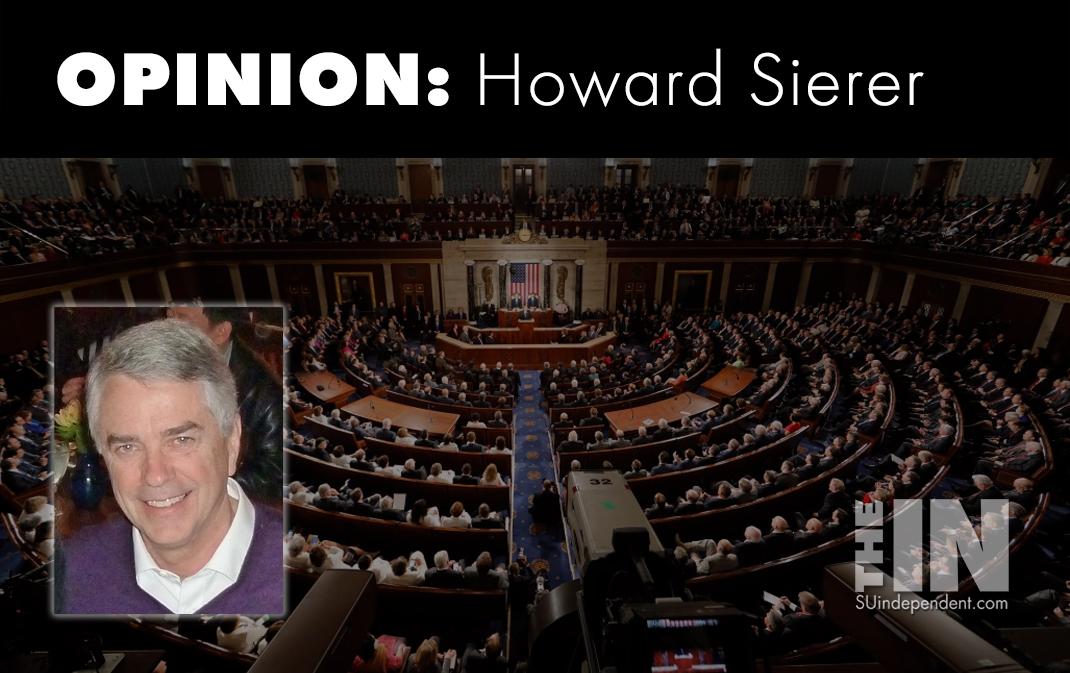
The High Cost of Good Intentions
– By Howard Sierer –
All government entitlement programs follow a seemingly inevitable pattern of benefit-eligibility expansion, growing far beyond their sponsors’ originally-stated purposes.
In his book “The High Cost of Good Intentions,” John Cogan describes how Congress keeps adding new beneficiaries to existing programs seemingly every year. In the famous words of philosopher George Santayana, “Those who do not remember the past are doomed to repeat it.” And repeat it we have for over 200 years as Cogan’s examples show.
Following the Revolutionary War, the country’s newly-created Congress enacted benefits for Continental Army and Navy soldiers injured in battle and for families of those killed. In subsequent years, those benefits were expanded first to state militia veterans, then to those with non-battle injuries and finally to all veterans.
The Civil War produced even more benefit-eligibility growth. Like the Revolutionary War, benefits initially were provided to those injured in battle and families of those killed. By 1890 they’d been expanded to all veterans and their survivors, turning pensions into a politically-motivated, broad-based welfare system. Over a million people were receiving benefits, accounting for 40% of government expenditures that didn’t peak until 1921.
Social Security’s disability insurance program, enacted in 1956, provided benefits to workers over age 50 who were permanently and totally disabled. By 1966, eligibility had been expanded to include those temporarily and partly disabled of any age. When enacted, the program was forecast to cost $1.1 billion annually by the year 2000. Its actual cost that year was $56 billion and by 2020 had grown to $144 billion.
Medicare hospitalization insurance when enacted was forecast to cost $9 billion annually by 1990. Its actual cost that year: $67 billion as eligibility was steadily expanded. Overall Medicare costs reached $800 billion in 2019.
Following its enactment in 1965, Congress steadily expanded Medicaid eligibility to those with higher and higher incomes: 25% of all Americans now qualify. Another 10% qualify for Obamacare subsidies.
In a previous column, I addressed the perverse incentives in the Supplemental Nutrition Assistance Program (née Food Stamps). Over 40 million Americans, many of them well above the poverty line, receive monthly SNAP benefits.
Cogan documents all the above and more and makes a further telling point about the resultant growth in federal spending. He notes that all – yes, every dime – of federal spending increases as a percentage of gross domestic product (GDP) from the end of World War II through 2019 have been for entitlement programs.
Defense spending as a percentage of GDP declined after the Korean War and non-defense discretionary spending has had no appreciable increase. I echoed others when I called our federal government “An Insurance Company with an Army.” Mandatory spending – entitlements and interest on the national debt – now consume 70% of the national budget.
Benefit eligibility growth is a result of what Cogan calls “equally worthy claims.” He explains that those excluded from the original benefit formula, usually those barely excluded at the margin, argue that they too deserve the benefits given to original beneficiaries.
Under ever-increasing pressure from these excluded individuals and from those representing them, Congress agrees, not wanting to be portrayed in the progressive media as hard-hearted and unreasonable. Then the process starts over again with a new group who find themselves just outside the new limits set for the added group of beneficiaries.
This process continues until the program’s original intent has all but disappeared amid an ever-swelling sea of claimants.
Biden’s Build Back Better legislation was loaded with every new entitlement program on progressive Democrats’ wish list. Despite their razor-thin majorities in the Senate and House, progressives were determined to implement the largest welfare state expansion ever.
They knew only too well that any and every new program they started could be – and would be – increased in cost and scope as those with “equally worthy claims” were added to its beneficiary rolls.
When will it end? Spending far more than tax receipts, year after year, leads to the inflation we’re experiencing now. Further, the day is fast approaching when entitlement program spending may be crowded out by interest payments on the national debt.
If something can’t go on forever…it won’t. But that doesn’t mean that things won’t be ugly – very ugly in this case – when it stops. Our elected officials will face a voter insurrection either as they are forced to cut benefits substantially or raise taxes to confiscatory levels.
Viewpoints and perspectives expressed throughout The Independent are those of the individual contributors. They do not necessarily reflect those held by the staff of The Independent or our advertising sponsors. Your comments, rebuttals, and contributions are welcome in accordance with our Terms of Service. Please be respectful and abide by our Community Rules. If you have privacy concerns you can view our Privacy Policy here. Thank you!
Click here to submit an article, guest opinion piece, or a Letter to the Editor




